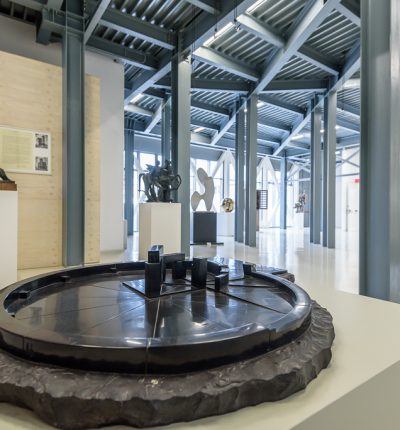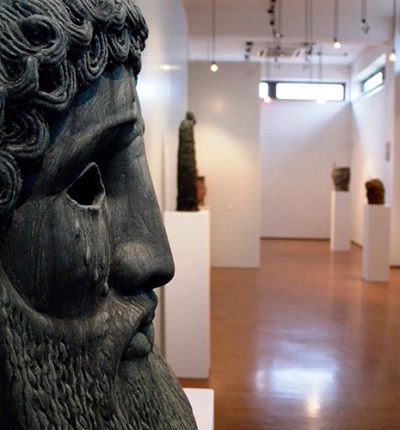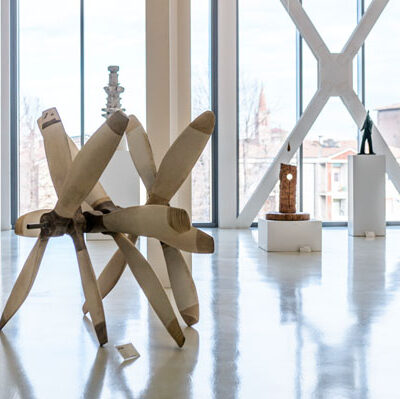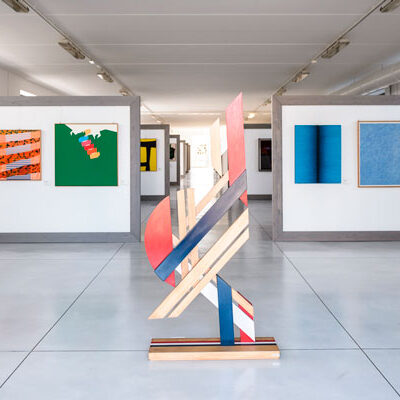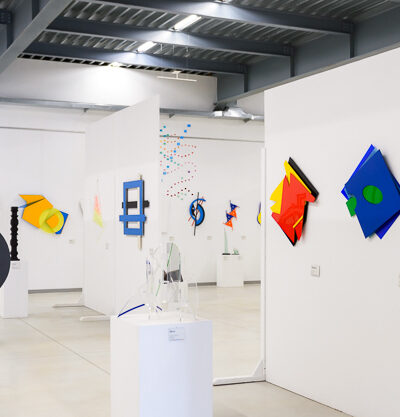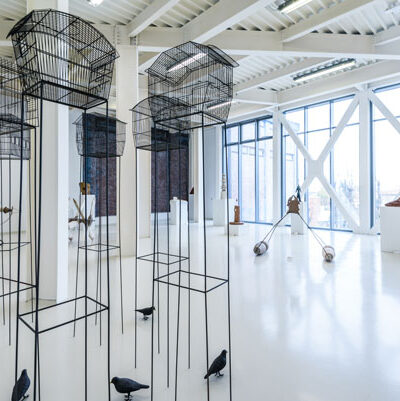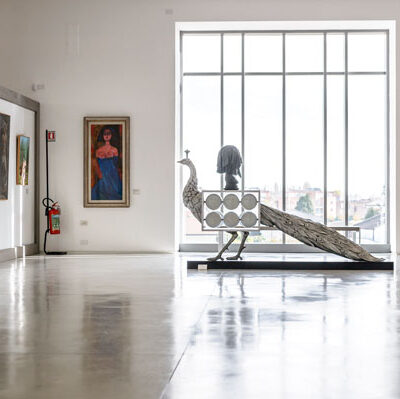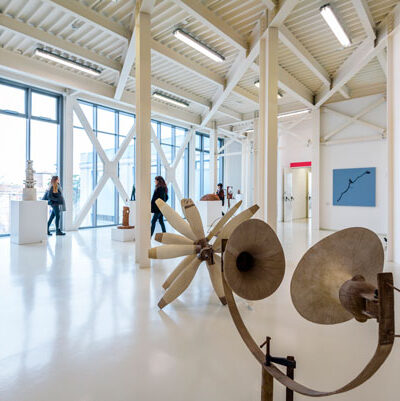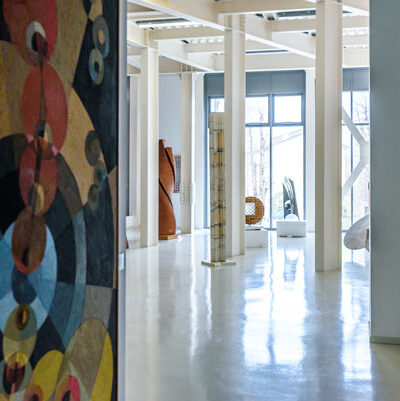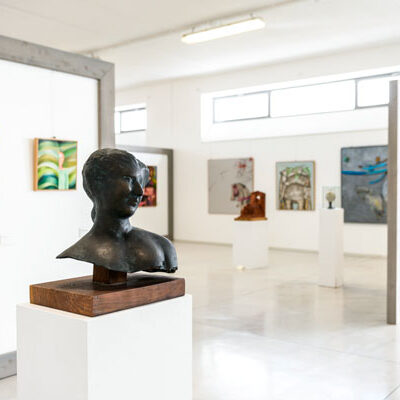The first section of MAGI Museum was born in 2000, thanks to the recovery of an important building of industrial archeology from the Thirties converted into an exhibition space. Giulio Bargellini’s initiative to restore a grain silo, abandoned for a long time, in order to turn it into a museum, had the dual advantage of enhancing an historical container that already had a very significant role throughout the territory, and to give it a new intended use, as an important aggregation place of the community. From a place of public grain storage, which guaranteed autonomy and support, the silo has now become a place where it is kept and shared a great heritage of ideas and works.
The restoration, carried out by the architect Giuseppe Davanzo, transformed the historic building without altering its external form and the impressive proportions, in order to obtain large multifunctional spaces arranged over four floors. With its peculiar blue color the old silo has now become an unusual protagonist of the urban landscape, suspended between history and modernity.
In the outside area of the building has developed the Garden of Sculptures, which reveals the abundance of artworks visible inside, while around the perimeter of the museum is currently under construction a great work in ceramic mosaic entitled “Constellations of the art”, designed by the artist Marco Pellizzola in order to highlight the diversity of themes and artistic movements collected by MAGI Museum.
The result is an eclectic and vital collection, capable of surprising for some rare peculiarities, of revealing original aspects, of charming with small masterpieces, sometimes even of provoking; it is definitely not homogeneous, without claiming completeness and definition, but for this reason fully representative of the contemporary spirit. Masterpieces already well historicized, often required for international exhibitions, are complemented by small unusual collections, as different Italian and international personalities are compared in the halls succession.
At the moment the permanent exhibition includes several cores of excellence. Not exposed works are preserved in areas of the museum waiting for a further extension of the building, already established.



